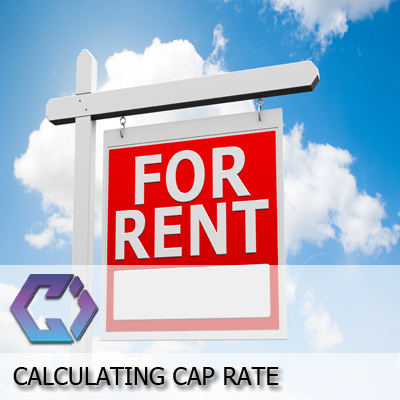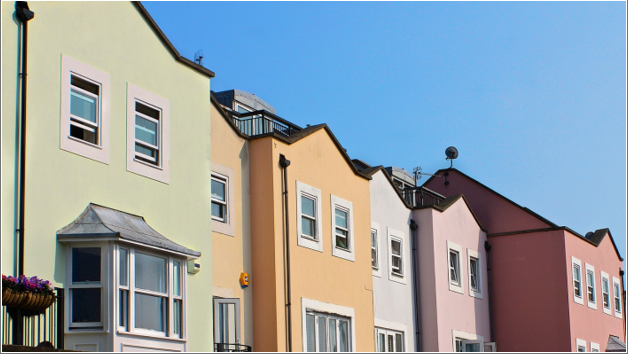
Calculating Cap Rate for a Rental Property
Meta description: Calculating cap rate for a rental property is one of the things you will have to do as a real estate investor. Here is how.
Introduction
Real estate remains one of the best and most important investments an investor can undertake. Apart from the regular and fixed income that it generates, it is also relatively less risky, except during severe economic downturns. However, most investors, having been inundated with the idea that real estate is good, dabble into real estate investing without conducting any research.

As with every other form of investing, when investing in real estate, it is important that you conduct some due diligence. This is because although real estate is generally good for your portfolio, not all pieces of real estate are worth picking up. In fact, some are outright bad and can actually damage your portfolio. It is not uncommon to see investors lose money on real estate.
Therefore, to prevent any scenario like this, it is important that they consider some factors. For example, you have to look at the fundamentals such as the location of the property and the overall condition of the real estate market. Usually, formal investment managers do construct financial models and forecasts for whatever assets they may be investing in; and you may also have to do so as a real estate investor.
The good news: that is not complex in any way.
THE CAP RATE
The cap rate is one of the most important values that you have to calculate when going into real estate. Just like bonds, real estate can be said to belong to the category of investments known as fixed income. This is because the returns you can get out of real estate investing per time, tends to be static or fixed.
Thus, when you purchase or invest in a rental property for commercial purposes, one of the factors you will like to consider is how much you can earn from it per time – say, a year. This will assist you in determining if the property is one you want to commit to. Investors commonly arrive at this using the capitalization rate.
The capitalization rate is used in commercial real estate investing to arrive at the rate of return reasonably expected to be generated from an investment property. Investors arrive at the cap rate using the net income expected to be generated and expressing it as a percentage of the asset value.
The cap rate is the ‘Gold Standard’ for assessing the profitability and return potential of real estate investments, and serves many uses – for purposes of comparison, for valuation purposes and to aid proper planning.
Calculating the Cap Rate
The cap rate can be presented in a simple formula thus:
Capitalization Rate = Net Operating Income (NOI)
Value
Let’s assume there is a property worth $700,000 and the net income you can generate per annum from rent on it is $70,000.
Cap Rate = $70,000
$700,000
The cap rate here is 10%. That is, you generate just 10% of the property’s worth yearly. You can arrive at the NOI by deducting from gross revenue, all expenses on the property per annum, including management fees, utilities, insurance, upkeep, and taxes, amongst others.
Cap Rate for Rental Property Examples
Let us look at a couple of examples to help better our understanding of the cap rate.
Sample 1
A warehouse property is worth $1.2 million, and the users of the warehouse pay a total of $190,000 annually. The operating costs are a total of $70,000, leaving us with NOI of $120,000.
The cap rate will be = $120,000 = 10%.
$1.2 million
Sample 2
You acquired a rental property for $500,000, and after deducting the costs over the year, you are left with $90,000.
Cap Rate = $90,000 = 18%
$500,000
What is the Cap Rate used for?
Calculating the cap rate becomes necessary for several reasons:
- Comparison
As an investor looking to invest in real estate, you will be offered several deals. Stuck on picking which to go for? Use the cap rate. Calculate the cap rate on them.
No matter how much you have got as an investor, funds will always be limited, and you do not want to commit the scarce funds to a deal that is anything less than the best. Hence, one such way to sieve through the array of property options is to make use of the cap rate.
Let us make use of an example. You are shopping for a property to acquire, at say $500,000; and after checking through a number of offers, you pare your options down to three, say Property A, Property B and Property C.
With Property A, you earn $80,000 annually; with Property B you get $120,000, while Property C generates net income of $100,000.
Calculating the Cap Rate:
- Property A = $80,000 = 16%
$500,000
- Property B = $120,000 = 24%
$500,000
- Property C =$100,000 = 20%.
$500,000
Property B has the highest Cap Rate, and may be the best for you, barring any other factor.
- Valuation
The projected cap rate can as well be used to arrive at the value of a rental property. That is, you can make use of the potential or expected capitalization rate of a property to arrive at a fair value of the property – either as its buyer or its seller.
This is done using the formula:
Capital Cost (Asset Price) = Net Operating Income (NOI)
Capitalisation Rate (Projected)
For instance, a property generates NOI of $50,000 and is expected to generate a cap rate of 7%.
Capital Cost = $50,000
7%
The property will be valued at $714,000.
This method provides an alternative to other means of valuing property which include paying consideration to the physical location of the property, amongst other economic factors. These methods tend to be subjective. However, the ‘cap-rate’ method tends to be more quantitative. It is, however, recommended that you do not rely on just one method of valuing real estate, as each of the methods has their merits and downsides.
- Planning
The cap rate can also be useful in investment planning. Studying the average cap rate of a particular market over the years can give an indication of where the market is headed. For instance, if average cap rates consistently decrease, then it may mean that the property is being overvalued relative to their returns.
What is a Good Cap Rate?
Importantly, we have to note that there is really nothing like a “good Cap Rate” and a “bad Cap Rate.” To determine if the cap rate of a property is good enough, you may have to look at the comparable cap rates of other similar properties in the location that were recently acquired. The quality of the property might also determine the returns – and therefore the cap rate – to expect from it.
However, there usually is a national cap rate average released regularly by reputable institutions. These institutions do arrive at these numbers by conducting surveys. Institutions that conduct these surveys include CBRE and Colliers International.
Limitations of the Cap Rate
While having knowledge of the cap rate is quite important, it has some limitations. For instance, the cap rate might not work for properties with complicated or irregular cash flows. It also does not take into account the time-value of money (i.e. inflation) as well as unforeseen developments.
Conclusion
When undertaking real estate investments, it is important that you plan properly by conducting appropriate, due diligence. You should take account of an array of physical and economic factors. You must also consider the financials – especially the cap rate. The above guide should assist you in working it out.




































































































































































































